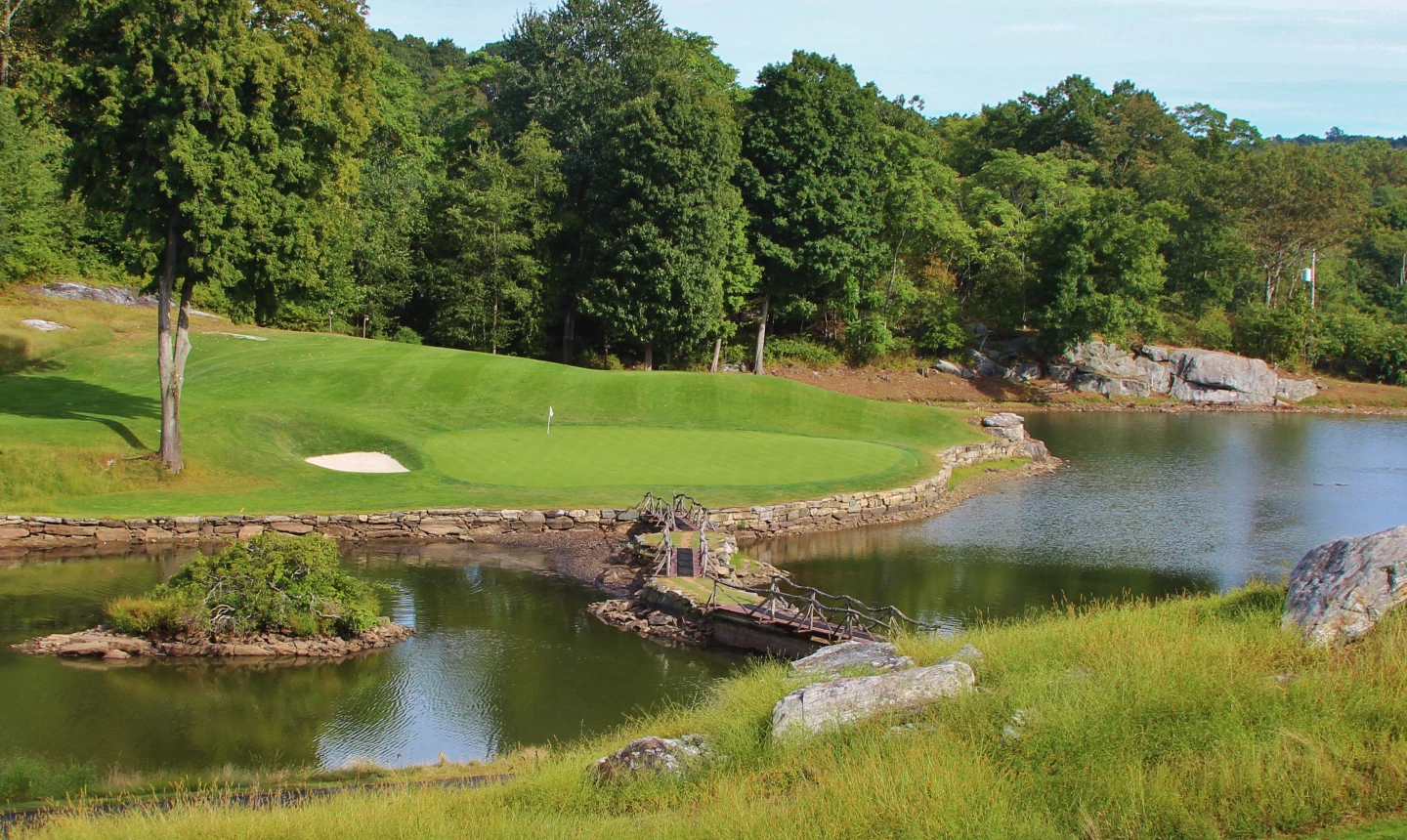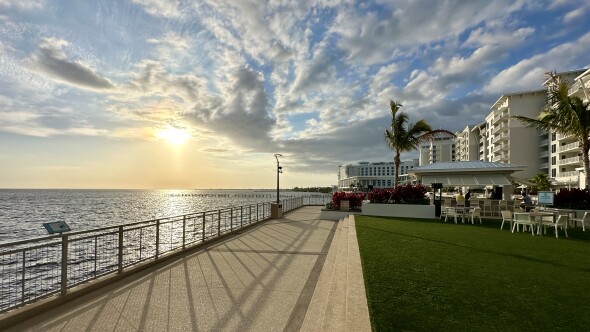Halloween is here, and we’re making our final preparations. One of the joys of this holiday above all others is that it is an invitation to escape the mundane everyday world and indulge in our fantasies. That’s why each year we seem to put more and more effort into everything from costumes to household the decorations and all the extra Halloween details down to special cocktails and other concoctions – have you tried sipping on a Garnet Crow while reading “The Raven”? To get in the spirit, we’ve been watching a few go-to movies (The Shining, The Sixth Sense, Alien, Dressed to Kill, and Get Out) and compiling a new music playlist (Thriller, Black Magic Woman, Sinatra’s Witchcraft, Dusty Springfield’s Spooky, The Monster Mash, and Devil Woman).
We’re certainly not about to leave golf out of the festivities. Halloween has its roots in the harvest feast signifying the final breath of summer. What better way to celebrate than to serve up a list of courses fit for the occasion? And since Halloween also conjures visions of spirits, devils, monsters, and other scary stuff, so much the better if the layouts on our Halloween hall of fame playlist are haunted or inspire a bit of intrigue and trepidation. So here is a Golf Odyssey fantastic Halloween lineup to feast on, quake over, and play to your heart’s content, no matter what costume you are wearing. We promise it will be a graveyard smash.
Pumpkin Ridge Golf Course

Regarded as Oregon’s no. 1 golf facility prior to the emergence of Bandon Dunes Golf Resort, Pumpkin Ridge was built on an old pumpkin patch. The club revels in its split personality: it’s half public and half private. Both eighteens are Bob Cupp designs, and a separate clubhouse serves each.
All 36 holes are tranquil, beautifully maintained, and unmarred by roads, real estate, traffic noise, or any other artificial intrusions. The private Witch Hollow takes its name from a section of the course secluded by trees and encompassing an environmentally protected area. Tread carefully here. This course, which is restricted to members and their guests, is somewhat tighter and tougher than it’s public-access companion. On the Ghost Creek eighteen, the namesake creek pops up, seemingly out of nowhere, to defend par and add visual appeal and a little dread.
Pasatiempo Golf Club
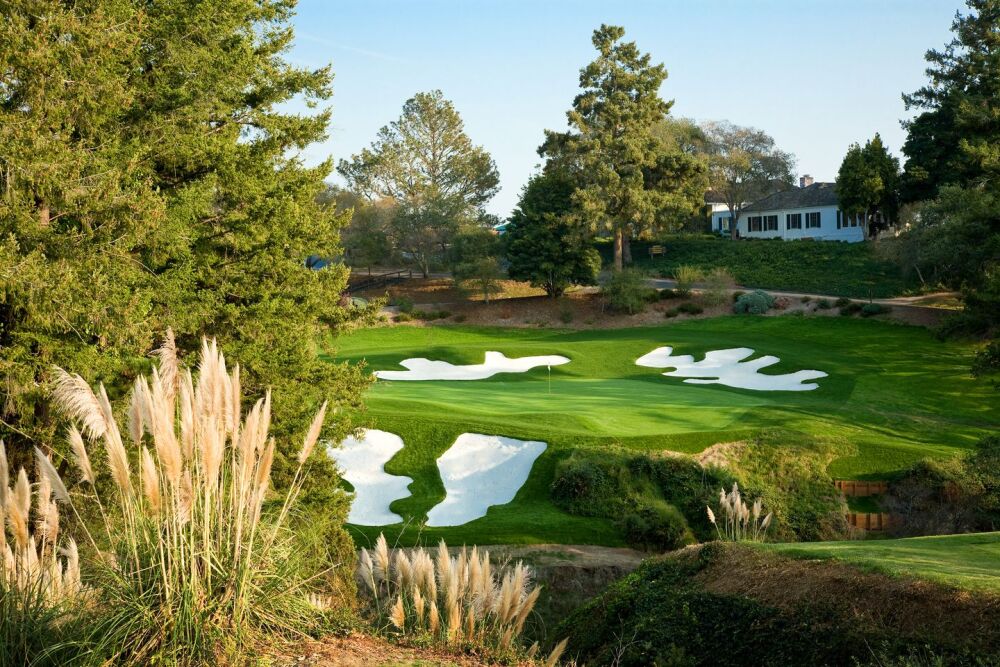
What would Halloween be without a few ghosts? Just off the freeway in Santa Cruz, between San Francisco and Pebble Beach, the ghost of Alister MacKenzie is said to lovingly laying out the playing field in 1928. He liked being there so much he had a house built on the course and lived on-site during his last four years. His ashes were spread over the golfing grounds shortly after his death in 1934.
Thankfully, the legendary course architect’s spirit is benevolent and no evil ghouls or zombies crowd out MacKenzie’s ghost. The great course architect certainly knew all about the power of spirits. Perhaps his most notable book, The Spirit of St. Andrews, tells how The Old Course is in some way present in so many other courses all over the world.
Pasatiempo, meanwhile, is prototypical MacKenzie. Tom Doak’s restoration shows MacKenzie, who was also a pioneering developer of military camouflage, at his most deceptive. Time and time again the design plays visual tricks on players, as what you see is often not what you get. As you wonder what MacKenzie has up his sleeve next, you suddenly realize this course is a joy to play.
Beyond the playing field itself, Pasatiempo is a spirited, convivial place with a genuine vintage ambience that may have you thinking you’ve stepped back in time. While the club often falls through the cracks when traveling golfers plan their Northern California itineraries, it is the only MacKenzie jewel on the U.S. mainland that is maintained to top private club standards and yet welcomes the public.
Bayou Oaks at City Park
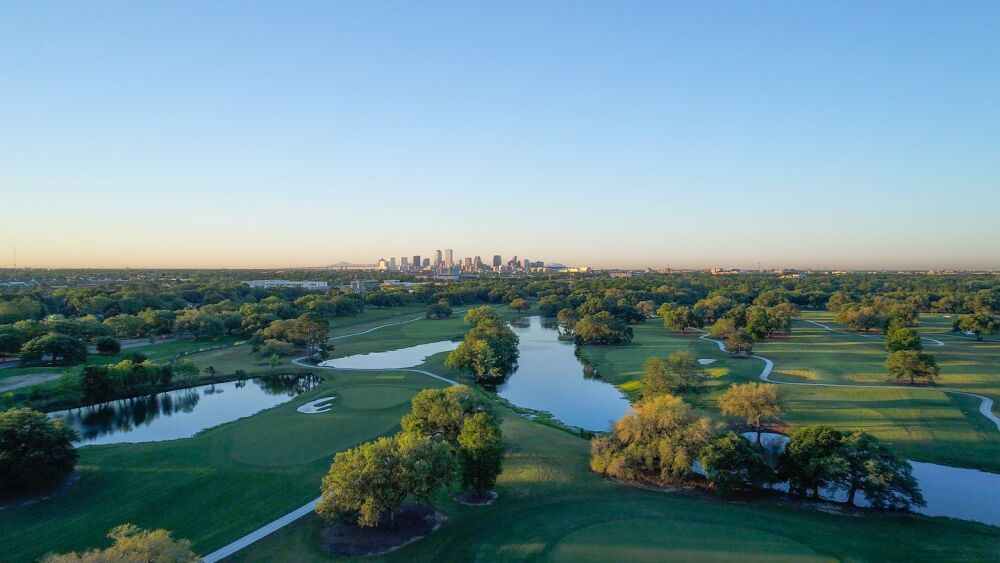
In New Orleans, a city as almost as famed for its eerie and macabre spirits as its festive partying, spectral images began haunting City Park Golf Course at least as far back as the 1960s. The creepiness set in after a woman golfer was hit by a bullet that seemed to come out of nowhere. Following the mysterious shooting, players started hearing voices near that same spot, though they never found anything. More recently, in the years before Hurricane Katrina, golfers noted an apparition by the 18th hole of the East Course. Many believed it was the ghost of one of best golfers the Big Easy ever produced, who played there almost every day of his life. At twilight his ghost appeared beside a tree, as if his aura was critiquing player’s strokes on the final hole.
After Katrina ravaged City Park in 2009, only one of the park’s four eighteens reopened. To fill the void, the city commissioned a new eighteen. Bayou Oaks, a.k.a. the South Course, is a Rees Jones creation built on the site of the old East and West courses. Not only is it part of a successful urban renewal project in a long-blighted section of the city, it also represents New Orleans’ attempt to court upscale traveling golfers. Bayou Oaks is a meticulously maintained, user-friendly test. The old ghosts have been exorcized, and a promising new era has begun in the Big Easy. Of course, elsewhere in City Park, you’ll find family-friendly ghost tours and a Voodoo festival during Halloween season. Rest assured the spirits who now look over Bayou Oaks are well intentioned and eager to put a smile on golfers’ faces.
The Blue Monster

If we asked you to name a Halloween monster, you might suggest werewolves, giant mummies, ghouls and goblins, and even Frankenstein. But the Blue Monster at Doral in Miami is larger than them all. Though the Blue Monster now refers to the entire course, the name was originally reserved for the famously fierce 18th hole of the resort’s Blue Course. Some years after its reputation was firmly established, a plaque was added by the tee of the Blue Monster noting it was the toughest finishing test on the PGA Tour and wishing players “good luck.” Time and time again the Blue Monster ate up its prey. In both 1978 and 1980, Jack Nicklaus held the lead going to the final hole, only to suffer a double bogey that caused his demise.
Like so many monsters in film, animation, and comic books (from Ursula in the Little Mermaid to Shrek, Insectosaurus, and the Stay Puft Mashmellow in Ghostbusters), the Blue Monster morphed into something larger. It transformed from one hole to a giant, broad-shouldered golf course. Donald Trump originally brought in Gil Hanse to do a restoration of Dick Wilson’s design, but Hanse ultimately wound up performing a complete re-do. The changes he and Trump made to the layout added bite to the challenge in every case. The Blue Monster course is now longer and harder, and more dramatic, varied, and scenic that it was before. Ironically, the fearsome par-4 finishing hole was the only test Hanse left virtually untouched.
Devil’s Pulpit and Devil’s Paintbrush

Since the first newspaper reference to “guising” or the wearing costumes around Halloween came from Ontario in 1911, and since the Canadians were also the first to use the term “trick or treat” (1927), it is only fitting that two Canadian entries enrich our list. Devil’s Pulpit and Devil’s Paintbrush are a pair of top-rated sister private courses in Ontario’s Caledon Hills, about an hour outside of Toronto. Both were commissioned by the two guys who created Trivial Pursuit. Having made piles of money from their wildly popular board game, they decided they could eliminate the disappointment of not being able to get a tee time by building their own golf course.
Devil’s Pulpit, the original eighteen from 1990, is the more sinister of the two. The up-and-down nature of the terrain, the intimidating carries and falloffs, and the severe undulations on the greens put stress on every swing. Whereas Devil’s Pulpit involved prodigious earth-moving, Devil’s Paintbrush, located four miles from Pulpit, is an almost treeless, links-style layout that rambles over a landscape punctuated by an endless array of humps, bumps, and swales. For your scorecard to survive here, you’ll need a ground game.
Both courses were designed by Dr. Michael Hurdzan and Dana Fry. Devil’s Pulpit was Hurdzan’s big breakthrough, and the course earned him future commissions far and wide. The two eighteens quickly ascended to the very top rungs of best Canadian course lists. The club tries to accommodate pro-to-pro requests to play these outstanding contrasting tests.
In the spirit of a Halloween trick and a corresponding nod to Trivial Pursuit, we have a confession to make about the names of the layouts. Despite the bedeviling challenge they each present, neither has anything to do with a harrowing lair of Lucifer or a golf course architect’s artistry on a satanic canvas. Rather, Devil’s Pulpit refers innocently enough to a local rock formation and Devil’s Paintbrush was named after a flower. Remember that the next time you play your favorite board game—you’ll be one step closer to filling your pie.
Sleepy Hollow Country Club

“The Legend of Sleepy Hollow,” by Washington Irving, is one of the quintessential frightful American Halloween tales. The story takes place in a region by the Hudson River that is now known as the “Washington Irving Hills.” Set in a glen haunted by ghosts, the legend reaches its climax when Ichabod Crane, a spurned suitor, encounters a headless horseman and is never seen again.
We’re not apt to go searching for ill-fated fictional characters, but we can’t resist the impulse to track down a great golf course, no matter how spooky its locale. The Holy Grail in the Washington Irving Hills is right at the site of Irving’s harrowing tale. Sleepy Hollow Country Club, a private club, rambles over 338 acres on land that the Vanderbilts sold to the Rockefellers back around 1900. The old estate mansion, Woodlea, became Sleep Hollow’s clubhouse. Built by the renowned architecture firm McKim, Mead, and White, it was once the eighth largest private residence in the country.
C.B. Macdonald and Seth Raynor’s original 18 on the property debuted in 1913. By the late 1920’s, A.W. Tillinghast had expanded the playing field to 27 holes. Gil Hanse performed a two-part restoration in 2016-17 and 2017-18. The quirky but stunningly beautiful signature hole is one of Macdonald’s Short template tests. On the 3rd hole, a long wooden bridge looks like it dates back to Irving’s day. It’s easy to imagine Ichabod Crane astride his horse while futilely galloping for his life with the headless horseman in hot pursuit. Sleepy Hollow Country Club is a Golden Age gem of a course. The club, which boasts one of the great club logos in the golf world, treats requests for unaccompanied non-member play on a case-by-case basis.
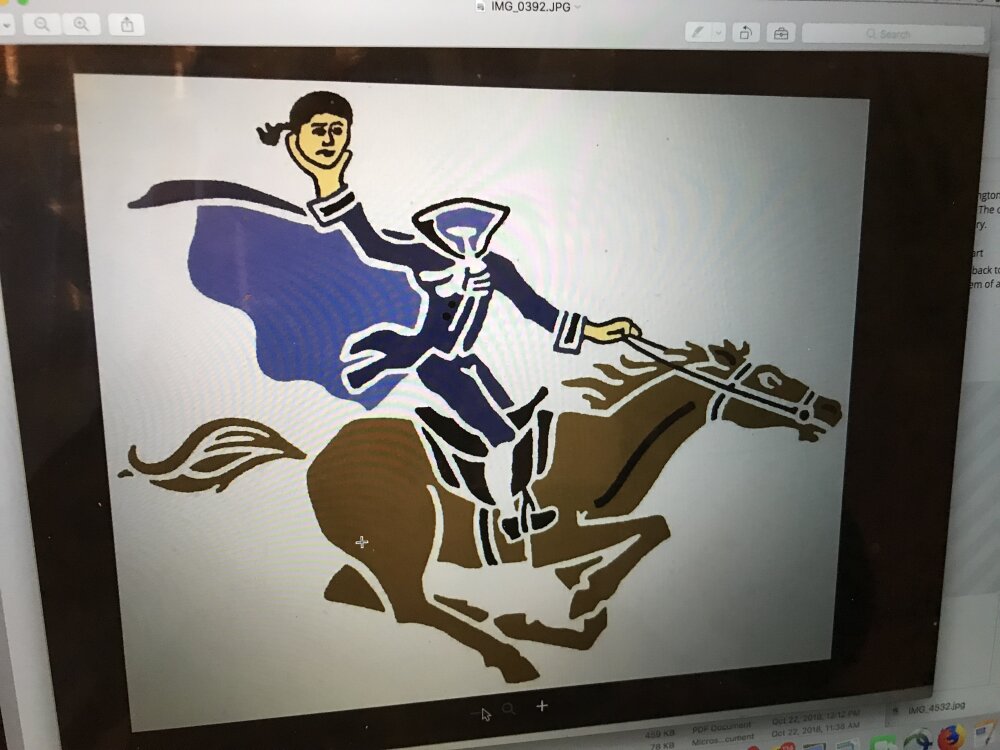
White Witch Golf Course

As the days shorten and bone chilling temperatures become more the rule than the exception in many parts of the country, our Halloween fantasies turn to more exotic locales. What better place to play a spirited round than Jamaica, an island so notoriously full of voodoo, ghosts, and dark goblins it provoked documentary filmmaker Michael Edward Phillips to try to explain the phenomenon in Haunted Jamaica (2014).
The island’s most notorious ghost is the legendary Annie Palmer of Rose Hall Plantation. Having come to Jamaica from Haiti, where her governess taught her voodoo, she became the lady of the plantation when she married and then murdered her husband John Palmer. It’s a tale told far and wide. Johnny Cash even recorded a ballad about it. But Annie wasn’t done. She also murdered two more husbands and several slaves she had seduced as lovers before she herself was done-in by murder on the plantation.
To this day, the ghost of Annie Palmer, the White Witch, still makes the rounds of Rose Hall Plantation. It’s fitting that Annie’s spirit imbues White Witch Golf Course, a layout designed by Robert von Hagge and Rick Baril and named in her honor. Jamaica’s no. 1 rated eighteen is as visually intimidating a course as you will find in the Caribbean. It features harrowing, death-defying drop shots. You may fear chancing upon Annie herself in the dark, narrow corridors of this mountainside playing field. If you do see her, resist her invitations to come closer, no matter how attractive she may appear.
Furnace Creek and The Devils Golf Course
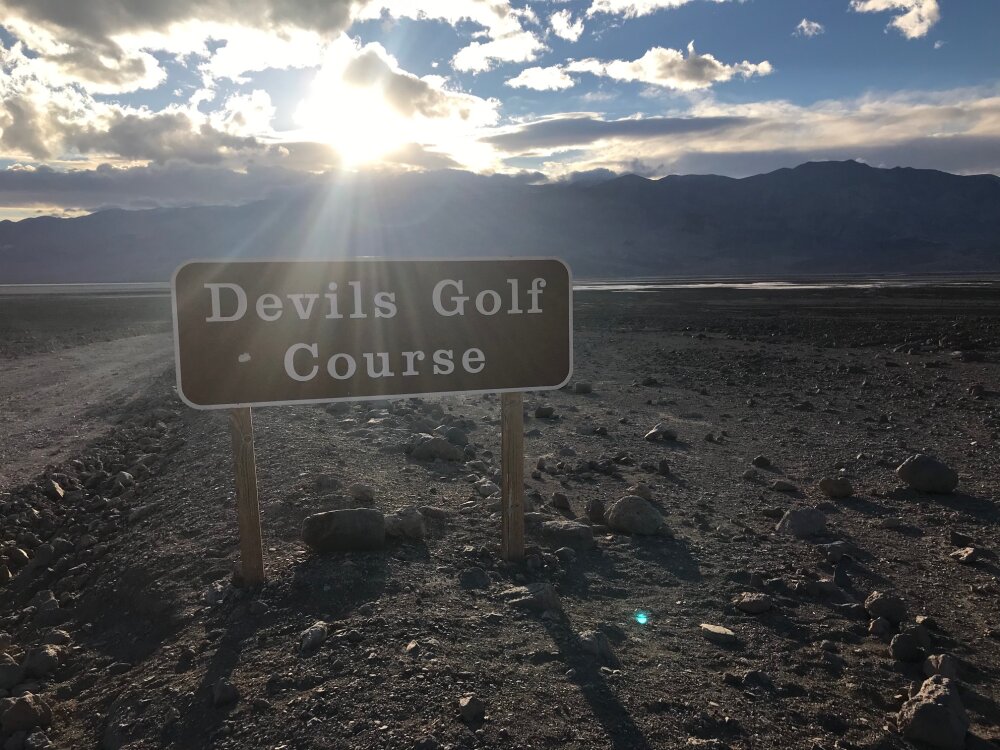
We close our haunted Halloween hit list in, where else, Death Valley. Furnace Creek Golf Course sits on the valley floor, 214 feet below sea level, making it the lowest elevation course in the world. It also holds the distinction of being the first layout ever to be grassed in the California desert. When temperatures reach 120 or higher, as they are known to do, the oasis-like grounds can become as hot as Hades. No wonder Furnace Creek was part of the “Awesome Eight Challenge,” a collection of the world’s most geographically diverse layouts to be played by extreme adventure seekers within a calendar year.
Our Death Valley focus isn’t on Furnace Creek, however, but instead on a more haunting playing field located off of a dirt road about 30 minutes away. You won’t see a clubhouse or a starter, but the sign clearly states that you’ve arrived at the Devils Golf Course. Good luck with this one. There’s only one player who is allowed to hit golf balls here, and it isn’t any of us. You don’t want to know the consequences that may befall you if you try to tee it up here.
Changes are you wouldn’t have much luck, anyway. The exposed playing field, which predates The Old Course by hundreds of thousands, if not millions of years, is as inhospitable as they come. Holes stretch for as far as the eye can see, and still you won’t be able to make out a flagstick. It’s a walking-only course, and though you can try walking it, beware. The welcome sign warns that as you try to negotiate the jagged halite salt crystal formations that erupt incessantly on the golf grounds, you may suffer injuries “and even broken bones.” Best to leave well enough alone. As a National Park guidebook famously said, “Only the devil could play golf on such a surface.”
So yes, on second thought, while we’re eager to test our game on all our other Halloween hall of fame layouts, the devil can have his golf course. Besides, we’ve also got a full slate of movies, songs, and cocktails to scare up some mayhem this Halloween. Cue up Ghostbusters.
